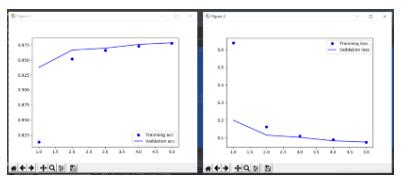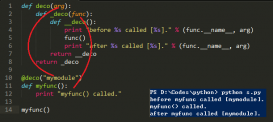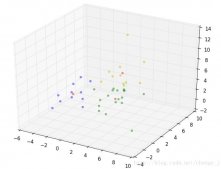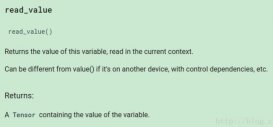1.在搭建网络开始时,会调用到 keras.models的Sequential()方法,返回一个model参数表示模型
2.model参数里面有个fit()方法,用于把训练集传进网络。fit()返回一个参数,该参数包含训练集和验证集的准确性acc和错误值loss,用这些数据画成图表即可。
如:
|
1
2
3
4
5
6
7
8
9
10
11
12
13
14
15
16
17
18
|
history=model.fit(x_train, y_train, batch_size=32, epochs=5, validation_split=0.25) #获取数据 #########画图acc = history.history['acc'] #获取训练集准确性数据val_acc = history.history['val_acc'] #获取验证集准确性数据loss = history.history['loss'] #获取训练集错误值数据val_loss = history.history['val_loss'] #获取验证集错误值数据epochs = range(1,len(acc)+1)plt.plot(epochs,acc,'bo',label='Trainning acc') #以epochs为横坐标,以训练集准确性为纵坐标plt.plot(epochs,val_acc,'b',label='Vaildation acc') #以epochs为横坐标,以验证集准确性为纵坐标plt.legend() #绘制图例,即标明图中的线段代表何种含义 plt.figure() #创建一个新的图表plt.plot(epochs,loss,'bo',label='Trainning loss')plt.plot(epochs,val_loss,'b',label='Vaildation loss')plt.legend() ##绘制图例,即标明图中的线段代表何种含义 plt.show() #显示所有图表 |
得到效果:

完整代码:
|
1
2
3
4
5
6
7
8
9
10
11
12
13
14
15
16
17
18
19
20
21
22
23
24
25
26
27
28
29
30
31
32
33
34
35
36
37
38
39
40
41
42
|
import kerasfrom keras.datasets import mnistfrom keras.layers import Conv2D, MaxPool2D, Dense, Flatten,Dropoutfrom keras.models import Sequentialimport matplotlib.pyplot as plt (x_train, y_train), (x_test, y_test) = mnist.load_data()x_train = x_train.reshape(-1, 28, 28, 1)x_test = x_test.reshape(-1, 28, 28, 1)x_train = x_train / 255.x_test = x_test / 255. y_train = keras.utils.to_categorical(y_train)y_test = keras.utils.to_categorical(y_test) model = Sequential()model.add(Conv2D(20,(5,5),strides=(1,1),input_shape=(28,28,1),padding='valid',activation='relu',kernel_initializer='uniform'))model.add(MaxPool2D(pool_size=(2,2),strides=(2,2)))model.add(Conv2D(64,(5,5),strides=(1,1),padding='valid',activation='relu',kernel_initializer='uniform'))model.add(MaxPool2D(pool_size=(2,2),strides=(2,2)))model.add(Flatten())model.add(Dense(500,activation='relu'))model.add(Dropout(0.2))model.add(Dense(10,activation='softmax'))model.compile('sgd', loss='categorical_crossentropy', metrics=['accuracy']) #随机梯度下降 history=model.fit(x_train, y_train, batch_size=32, epochs=5, validation_split=0.25) #获取数据 #########画图acc = history.history['acc'] #获取训练集准确性数据val_acc = history.history['val_acc'] #获取验证集准确性数据loss = history.history['loss'] #获取训练集错误值数据val_loss = history.history['val_loss'] #获取验证集错误值数据epochs = range(1,len(acc)+1)plt.plot(epochs,acc,'bo',label='Trainning acc') #以epochs为横坐标,以训练集准确性为纵坐标plt.plot(epochs,val_acc,'b',label='Vaildation acc') #以epochs为横坐标,以验证集准确性为纵坐标plt.legend() #绘制图例,即标明图中的线段代表何种含义 plt.figure() #创建一个新的图表plt.plot(epochs,loss,'bo',label='Trainning loss')plt.plot(epochs,val_loss,'b',label='Vaildation loss')plt.legend() ##绘制图例,即标明图中的线段代表何种含义 |
以上这篇使用Keras画神经网络准确性图教程就是小编分享给大家的全部内容了,希望能给大家一个参考,也希望大家多多支持服务器之家。
原文链接:https://blog.csdn.net/u014453898/article/details/89222503












